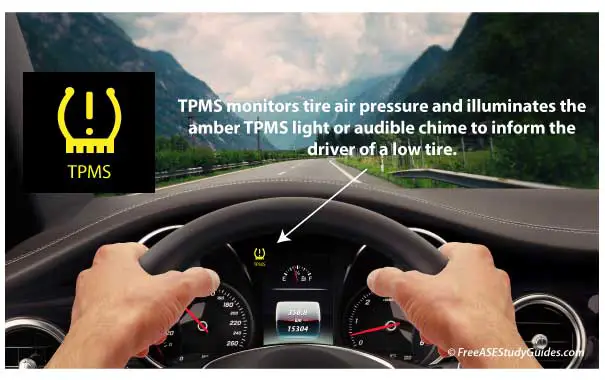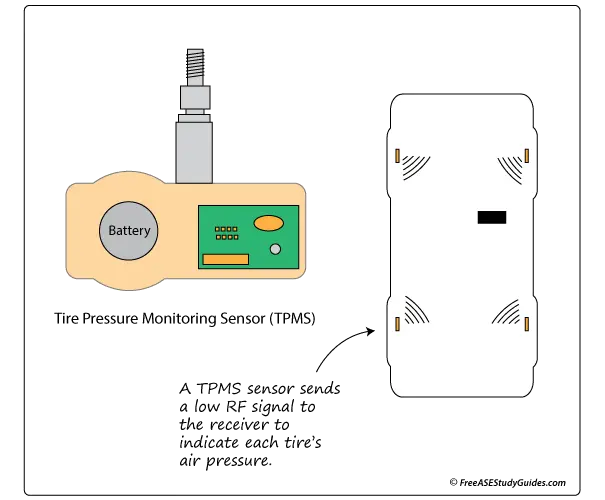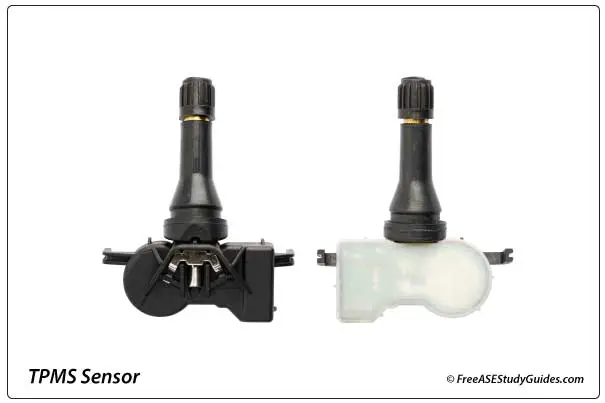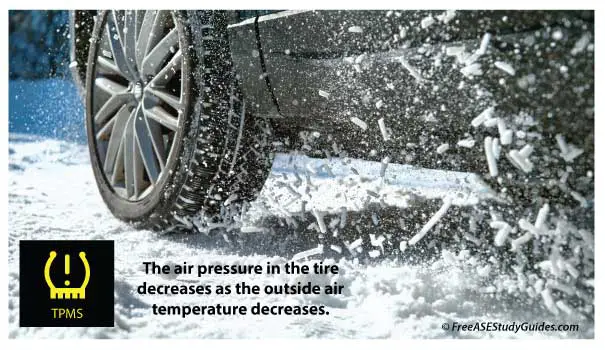Tire Pressure Monitoring System

(TPMS) Tire Pressure Monitoring Systems monitor the vehicle's tire air pressures. Some older model vehicles used an indirect system with wheel speed sensors to estimate air pressure. This is because a tire with low air pressure spins faster than one with correct air pressure.

Vehicles built after 2007 must include a direct TPMS system with a tire pressure monitoring sensor placed inside each wheel assembly. The system includes a receiver inside the BCM or integrated into the keyless entry system. The sensors regularly send an (RF) radio frequency signal to the receiver. This signal includes information like the sensor's ID and tire air pressure. These sensors can have different modes depending on vehicle speed or if the vehicle has been parked for a specified period.

They include a lithium-ion battery lasting up to ten years. When these batteries wear, the sensor's signal is weak, and communication with the receiver in the control module is hampered. This will illuminate the amber TPMS warning light. If the light is on continuous, check and ensure the tire pressures on the driver's side door placard are correct. These are the values direct systems use for tire air pressures. If the light is flashing, the controller is indicating a system fault.

A special tool may be required to initialize the sensor. Most new vehicles relearn from driving a specified amount of time. If the light goes out after driving a while, one of the tires could have low air pressure, and as it heats from driving, the air pressure rises, and the light goes out. This is because there is a one psi change in tire air pressure for every ten-degree change in temperature.